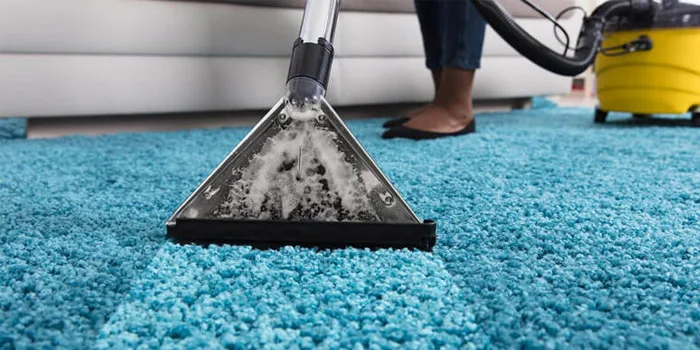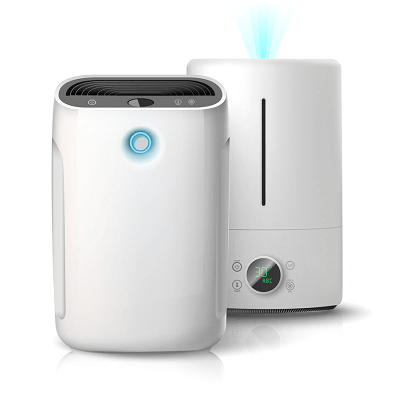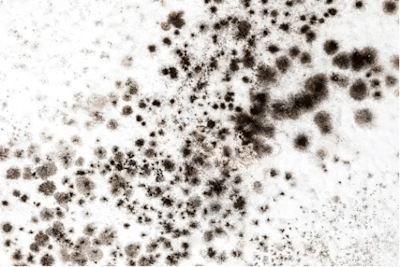Is your ceiling looking a little green or fuzzy? Don’t worry, you’re not alone – lots of homes get mold up top.
Ceilings are the perfect spot for mold to grow when the air is humid and warm. See, warm air rises to the ceiling, and if there’s too much moisture in the air, it sticks up there. Over time, all that extra wetness lets mold take over!
Bathroom ceilings especially get mold fast. All that steam from hot showers leaves water behind that molds love. But mold can hit any ceiling in your home. Sometimes you can see it, other times it hides behind the ceiling until it’s really bad. Roof leaks are sneaky too – mold may be growing above you without you even knowing!
BUT DON’T FRET – there are things you can do about moldy ceilings. In the next section, We’ll show you some simple checks, fixes, and tricks to get rid of ceiling mold for good. Keep reading to protect your home!
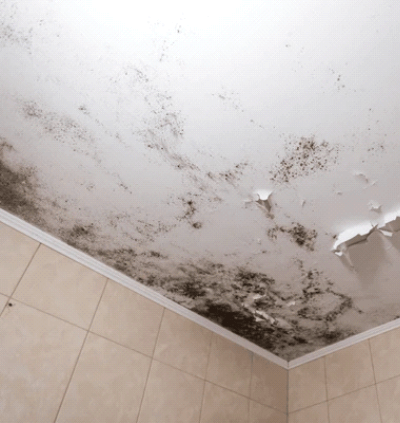
Key Takeaways
- High humidity levels, poor ventilation, roof leaks, and poor insulation are some of the main causes of mold growth on ceilings. Bathrooms and areas with steam are especially prone.
- Signs of mold on ceilings include damp spots, discoloration like green/yellow stains, musty odors, deteriorating paint or wallpaper, and excess condensation on surfaces.
- To remove mold from ceilings, wear protective gear and contain the spores. Brush off visible growth, apply a cleaning solution like bleach or vinegar, let it sit, then scrub and ventilate thoroughly.
- A dehumidifier can help completely dry out areas and kill remaining spores. Contacting professionals is recommended for severe mold as it can hide behind surfaces.
Causes of Mold on Ceiling
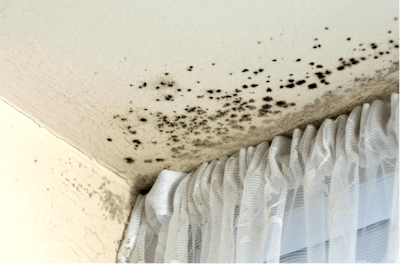
Excessive Humidity
High humidity levels in your house provide mold with a life source. It can grow on organic material and grow rapidly with high moisture levels. Mold on ceilings in bathrooms is very common because bathrooms are often poorly ventilated. So is the case with the rest of the house.
Poor Ventilation
Without proper ventilation, the humid air will remain trapped in your house. The moisture will start depositing on ceilings and cause fungus growth of all types. Keep windows open to allow fresh air to come in. If you live in a place with high humidity, ventilation might not help. In that case, run a dehumidifier to combat mold on ceilings.
Roof Leaks
Roof leak is very dangerous for your ceiling. It will not only breed mold, but also cause severe water damage to the structural integrity of the ceiling. The water accumulation will cause the ceiling material to rot. Discoloration and dark spots on ceilings are a sign of roof leaks. In case of a leakage or a burst pipe, mold will start growing and spreading on your ceilings rapidly.
Poor Insulation
If the insulation is not installed properly, it can cause the temperature to rise and increase the flow of air. When water vapor comes in contact with a ceiling with poor insulation, it will cause condensation. This in turn causes mildew growth on the ceiling. Damp spots on the ceiling are a sign of poor insulation.
Signs of Mold on Ceilings
Look for signs of mold on your ceilings and fix the causes and sources instantly. If the signs are there but no visible mold, hire mold inspection companies.

Damp Spots
If you see any damp spots on your ceilings, it’s a sign of a water leak. If there’s a water source above your ceiling, it might be leaking. This is a sign of a roof leak which also tells you that there’s mold hiding inside the mold. This will gradually cause the mold to grow on the ceiling surface as well.
Discoloration
If you suspect any discoloration or stains on your ceiling, it’s mold. Mildew or fungus can be green, yellow, or black. Any stains of these colors suggest that there’s mold on the ceilings.
Bad Odor
A musty odor in the house is a sign of mildew growth. If you don’t see it anywhere else, it means there’s mold on the ceiling. If you don’t see any visible signs yet, the mold is hiding under the surface of your ceiling. Check your attic or roof for mold and water damage.
Deteriorating Paint
If paint starts falling off your ceilings, or if the wallpaper is coming off, it’s a sign of water damage and mold growth. Check for burst pipes or water leaks in your ceilings before the entire ceiling is covered with visible mold.
Excess Condensation
More than usual condensation on the window panes, metal frames, or any other glass or metal objects is a sign of mold. The dampness that is caused by excess condensation is a sign that there’s mold on ceilings or any other warm and damp area of the house.
How to Get Rid of Mold on Ceiling?
Cleaning mold on the ceiling is very difficult and dangerous. Before you begin, make sure you’re wearing protective gear and do not spread the mold accidentally. Fix any water damage in the house to prevent it from coming back. Here are a few ways of removing it by yourself:
Brush Off The Fuzzy Growth
Take a soft brush or a scrubber and remove the visible growth from the ceiling. Make sure the spores are not falling on your floor. Put a disposable sheet on the floor below the affected ceiling.
Prepare a Cleaning Solution
The mold will not die if you simply brush or scrub it off. You can buy a mold-killing spray from the market or prepare one at home. Borax, bleach, hydrogen peroxide, and vinegar and effective household materials that kill mold effectively.
Apply the Cleaning Solution
Please choose one of the cleaning solutions mentioned above and spray it onto the affected areas. Spray generously so that it does not dry out too quickly. Let it sit for about 30 – 60 minutes or until completely dry.
Ventilate the Area
Open all windows and doors to avoid inhaling toxic fumes or any spores. This will allow the solution to dry out quickly without suffocating you or your family members.
Scrub the Dried Ceiling
Once the solution has dried, you need to scrub off the affected areas once more. Any residual particles or spores attached to the ceiling will come off after a gentle scrub.
Run a Dehumidifier
To completely dry out the ceiling and the affected areas, run a dehumidifier for an hour or so. This will extract all excessive moisture from the ceiling as well as the room. Any living spores scattered in the air will also die after the moisture levels drop.
Conclusion
Cleaning mold on the ceiling is very difficult because it’s not easy to reach the height. If you do reach the ceiling, the chances of injury increase if you’re not careful.
Additionally, you might not be able to see if anything is growing beyond the ceiling surface. If you clean the mold from the ceiling surface, you might spread it to walls and floor accidentally. Or, the mold is hiding under the surface and will reappear on the ceiling in a few days.
To avoid all these issues, contact 24/7 Service Pros for complete inspection and removal.
Which Areas We Serve in South Florida?
- Hollywood
- Davie
- Miami Beach
- Weston
- Hallandale Beach
- North Miami Beach
- Sunrise
- Tamarac
- Coconut Creek
- Fort Lauderdale
- Miami
- Boca Raton
- Hialeah
- Margate
- Pembrock Pines
- Dania Beach
- Lauderhill
- Delray Beach
- Pompano Beach
- Deerfield Beach
- Coral Springs
- Plantation
- Doral
- Aventura
- Miramar
- Sunny Isles Beach

